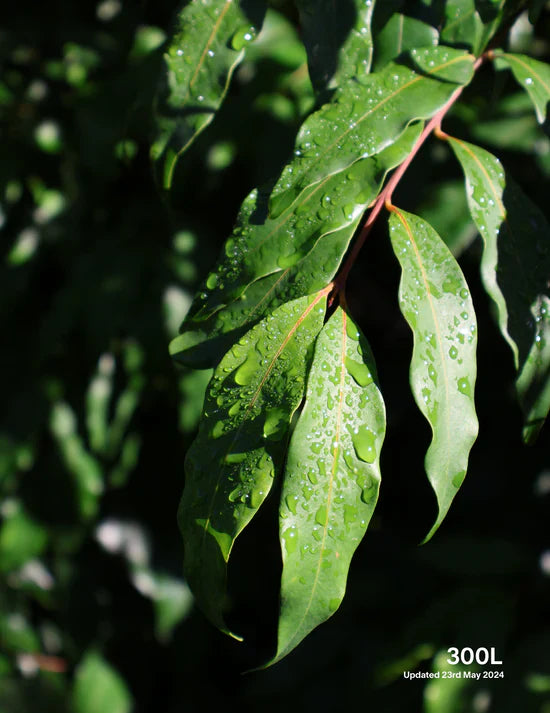Spring is a time of renewal, where gardens burst into life with vibrant colors, fragrances, and the joyful sounds of wildlife. Trees play an essential role for those looking to create a sanctuary for birds, bees, and other creatures. In this guide, we’ll explore designing a wildlife-friendly garden that attracts and supports diverse species, using trees that provide food, shelter, and beauty throughout the year.
Understanding the Importance of Wildlife in Your Garden
A wildlife-friendly garden supports biodiversity and enhances the health of your plants and soil. Birds help control pests, bees pollinate flowers, and other animals contribute to the natural balance of your garden. You can create a haven for these creatures by planting specific trees, ensuring that your garden thrives throughout the seasons.
Benefits of Creating a Wildlife-Friendly Garden
- Enhanced Biodiversity: A variety of species contribute to a balanced ecosystem.
- Natural Pest Control: Birds and beneficial insects help keep pest populations in check.
- Pollination: Bees and butterflies aid in pollinating flowers, leading to more bountiful blooms.
- Year-Round Interest: Wildlife-friendly trees provide beauty and interest in all seasons.
Selecting the Right Trees for Wildlife
When choosing trees for a wildlife-friendly garden, consider those that offer food, shelter, and nesting opportunities. Trees with flowers, fruits, and dense foliage are particularly attractive to birds, bees, and other creatures.
1. Nyssa Sylvatica (Black Gum Tree)
The Nyssa Sylvatica, commonly known as the Black Gum Tree, is a deciduous tree known for its stunning autumn colors and attractive berries. This tree is a magnet for birds, providing them with a rich food source through its small, blue-black fruits. The tree’s dense foliage also offers excellent shelter and nesting sites for various bird species.
- Mature Height: Up to 15-25 meters
- Mature Width: Up to 10-15 meters
- Best Uses: Shade tree, ornamental
- Leaf Appearance: Glossy green in summer, turning vibrant red in autumn
- Rate of Growth: Slow to moderate
- Tolerates: Wet soils, partial shade
2. Acacia Implexa (Hickory Wattle)
Acacia Implexa, or Hickory Wattle, is an evergreen tree native to Australia. It is celebrated for its golden-yellow flowers and ability to thrive in various conditions. Thanks to its fragrant blossoms, this tree is particularly attractive to bees and other pollinators. It also provides habitat and food for birds and small mammals, making it an excellent choice for a wildlife-friendly garden.
- Mature Height: Up to 10 meters
- Mature Width: Up to 5 meters
- Best Uses: Screening, windbreak
- Leaf Appearance: Narrow, green phyllodes
- Rate of Growth: Fast
- Tolerates: Drought, poor soils
3. Weeping Lilly Pilly (Waterhousia floribunda)
The Weeping Lilly Pilly, or Waterhousia floribunda, is a versatile evergreen tree known for its graceful weeping habit and dense foliage. This tree is highly attractive to birds because of its small white flowers and edible purple berries. It also provides excellent shelter and nesting opportunities, making it a must-have for any wildlife-friendly garden.
- Mature Height: Up to 15 meters
- Mature Width: Up to 8 meters
- Best Uses: Privacy screen, ornamental
- Leaf Appearance: Glossy green leaves, turning bronze when young
- Rate of Growth: Moderate to fast
- Tolerates: Humidity, partial shade
Planting and Care Tips for Wildlife-Friendly Trees
Proper planting and care are essential to ensure your wildlife-friendly trees thrive and continue attracting creatures to your garden.
Best Practices for Planting Wildlife-Friendly Trees
- Location: Choose a site with adequate sunlight and well-drained soil. Consider the tree's mature size to ensure it has enough space to grow.
- Soil Preparation: Amend the soil with organic matter to improve fertility and drainage.
- Watering: Provide deep watering during the establishment phase, especially in dry conditions.
Tips for Attracting Wildlife to Your Garden
- Create a Water Source: Install a birdbath or small pond to provide water for birds, bees, and other creatures.
- Use Native Plants: Native trees and plants are more likely to attract local wildlife.
- Avoid Pesticides: Reduce or eliminate the use of pesticides, as they can harm beneficial insects and other wildlife.
General Maintenance Tips
- Mulching: Apply a thick layer of mulch around the base of trees to retain moisture and regulate soil temperature.
- Pruning: Regularly prune trees to remove dead or diseased branches and maintain their shape.
- Fertilizing: Use a balanced fertilizer to promote healthy growth, especially during the growing season.
FAQs
What are the best trees to plant to attract birds?
A: Nyssa Sylvatica and Weeping Lilly Pilly are excellent choices for attracting birds due to their fruit and dense foliage.
How can I attract bees to my garden?
A: With its fragrant flowers, planting trees like Acacia Implexa will attract bees and other pollinators to your garden.
Can I create a wildlife-friendly garden in a small space?
A: Even small gardens can be wildlife-friendly by choosing the right trees and providing food, water, and shelter for various species.
How do I protect my trees from pests without harming wildlife?
A: Use natural pest control methods, such as encouraging beneficial insects and avoiding chemical pesticides.
Is it possible to attract wildlife year-round?
A: Yes, planting various trees and plants that provide food and shelter throughout the year can attract wildlife to your garden in all seasons.
Creating a wildlife-friendly garden is rewarding because it connects with nature while supporting the local ecosystem. By selecting trees like Nyssa Sylvatica, Acacia Implexa, and Weeping Lilly Pilly, you can create a vibrant sanctuary that attracts birds, bees, and other wildlife, ensuring your garden is alive with activity throughout the year. Whether you’re an experienced gardener or just starting, these trees will help you transform your outdoor space into a thriving habitat for wildlife.










